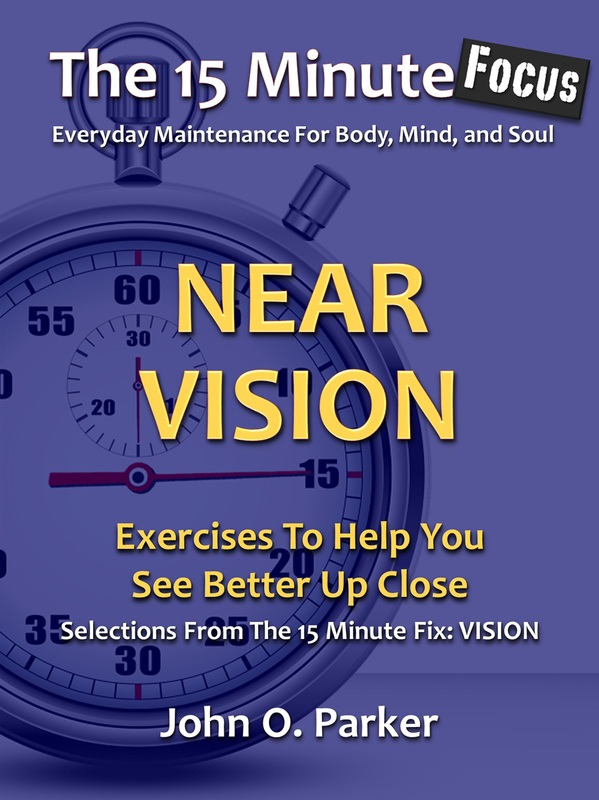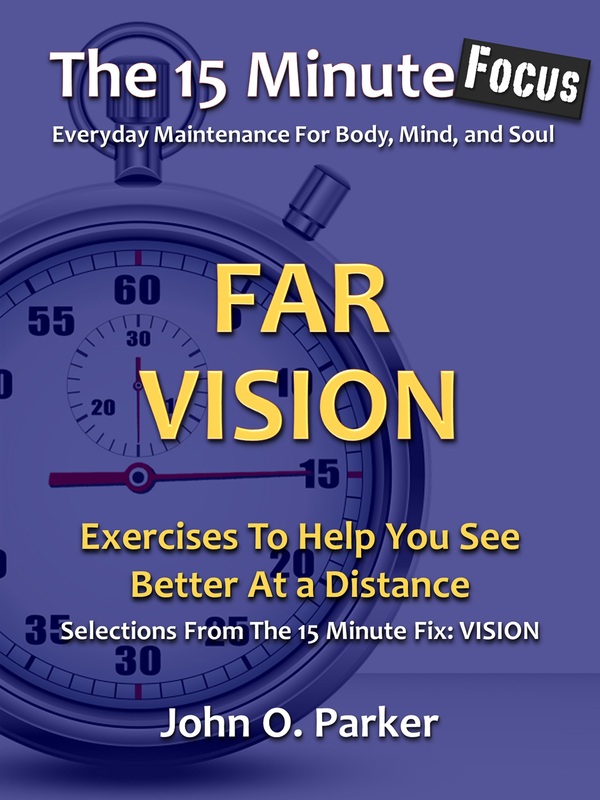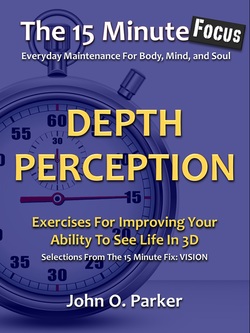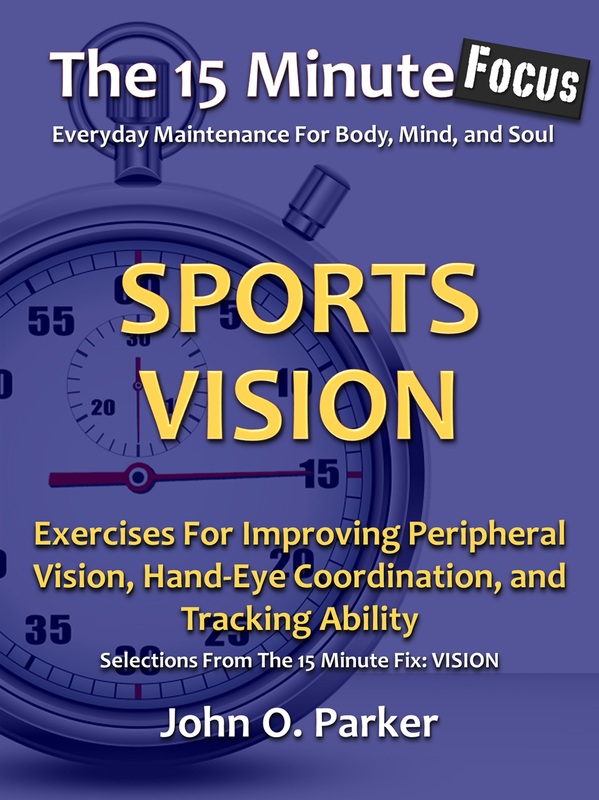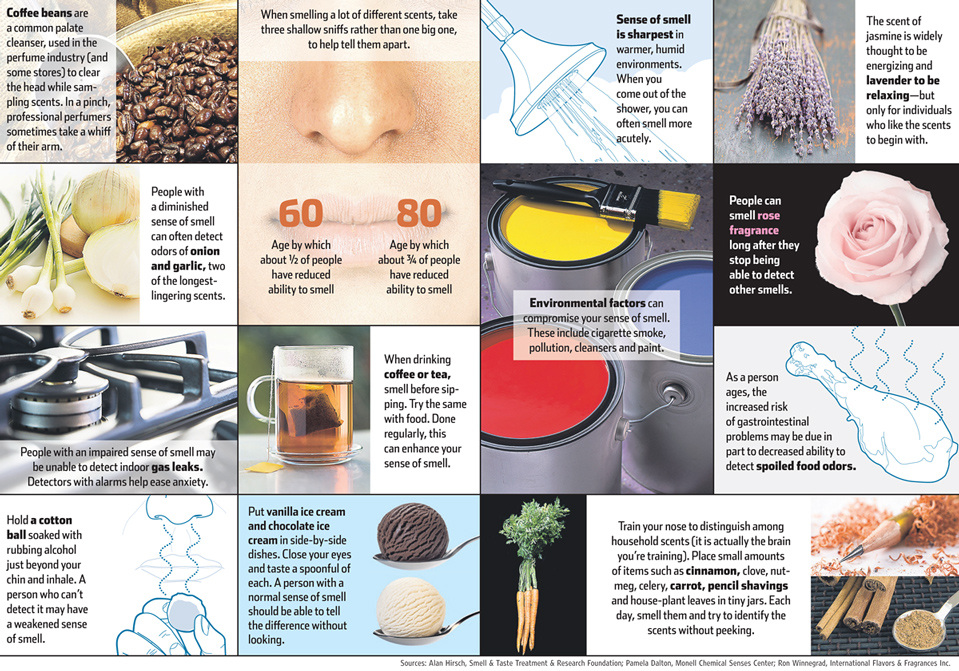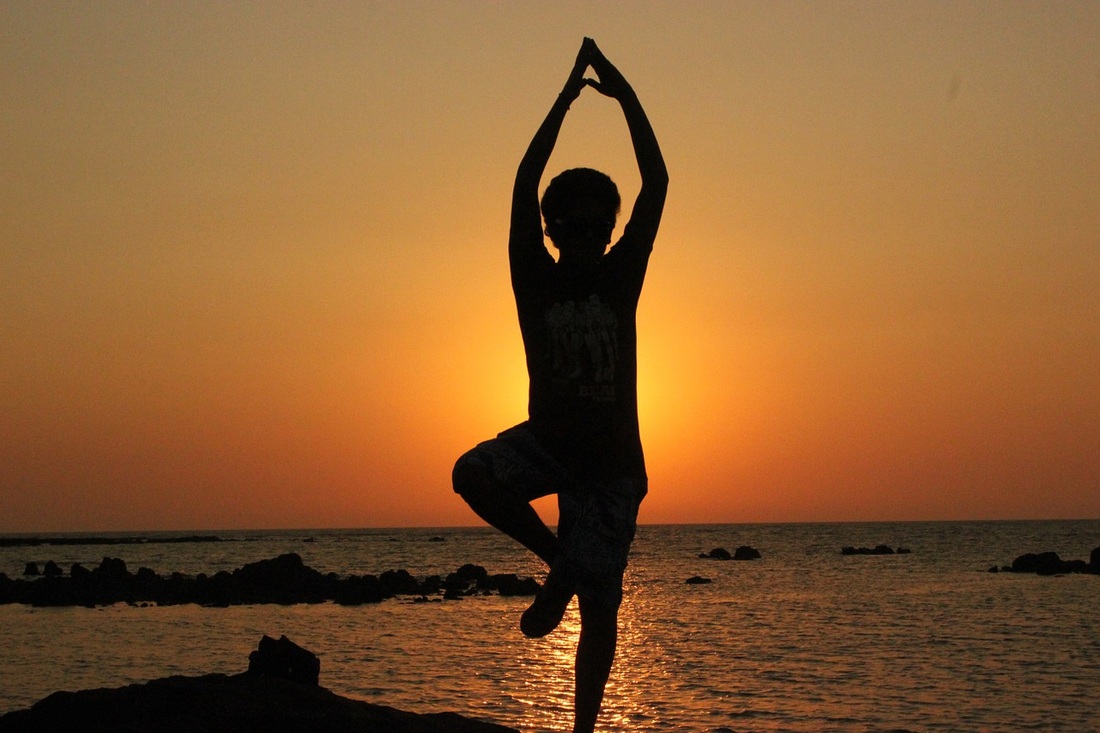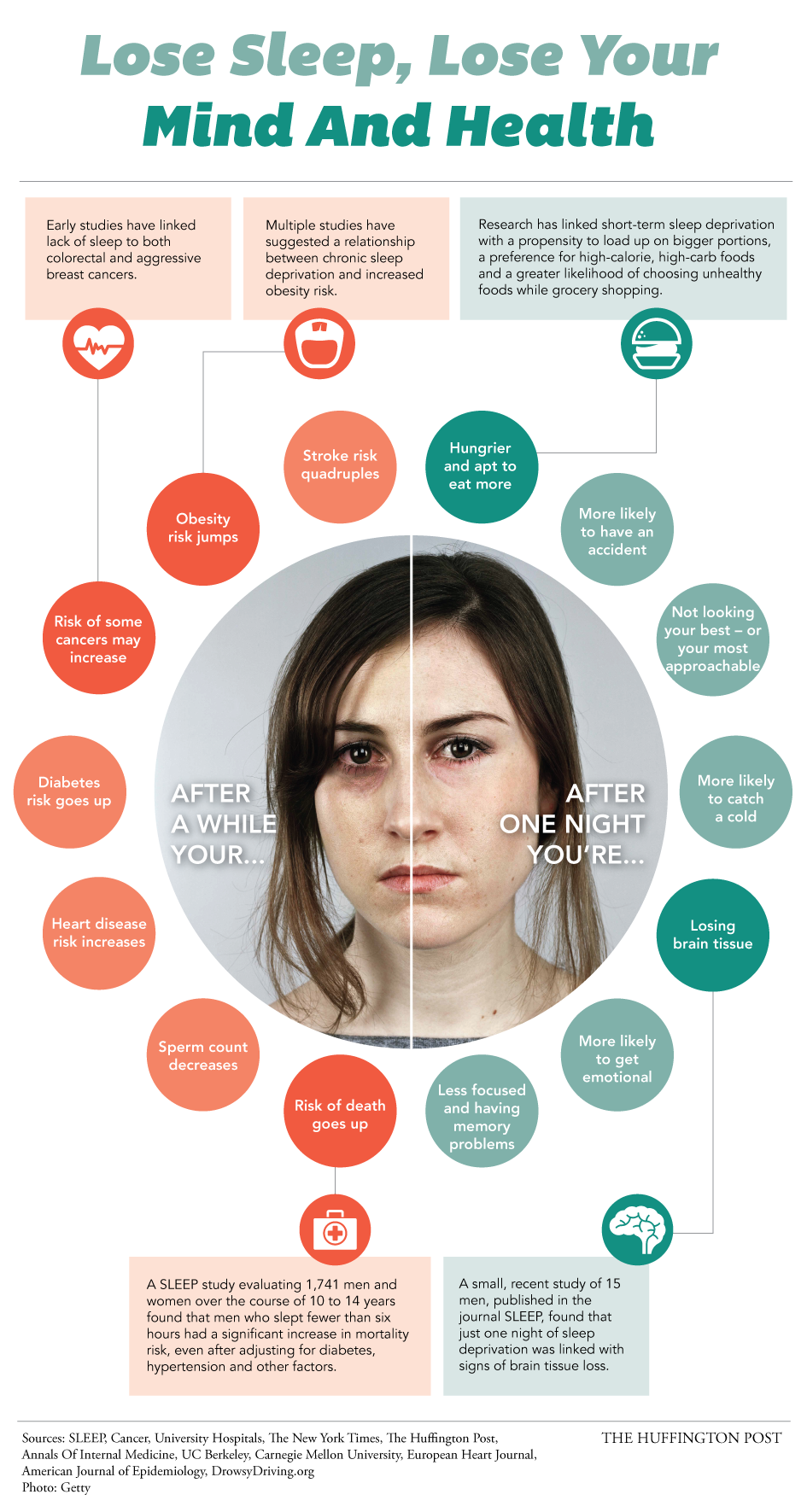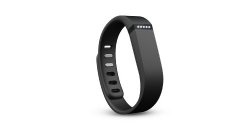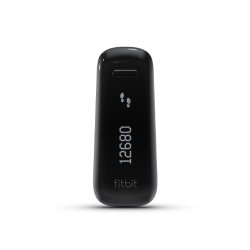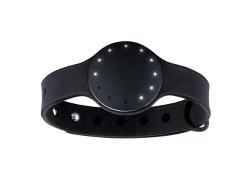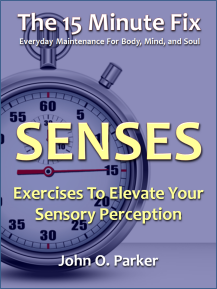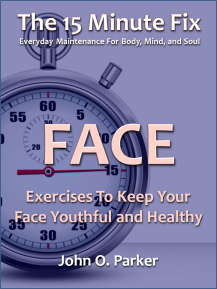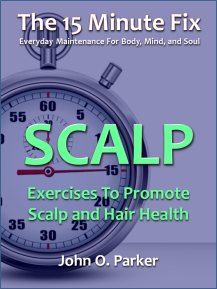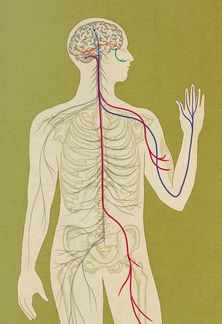
 Most of us will maintain our sensory perception for most of our lives, even if we sometimes have to work to keep it at the level we want. Others aren't so fortunate and have to take more drastic steps. This piece from WIRED magazine is a couple of years old, but it is an interesting overview of some of the technologies being developed to help people with more serious sensory issues.
0 Comments
I am excited to announce the launch of The 15 Minute Focus series. The Focus series came into being after a number of readers (and potential readers!) suggested that they were interested in focusing on one particular issue. With the clear categorizations within each book, it made sense to offer targeted programs at a lower price for those who want to focus on one particular area or who want to dip a toe in the water before buying one of the bigger books. Focus series books will have 15-20 exercises, tracking/progress tests, and a workout plan, all targeted toward the particular focus of each book. For the time being, Focus series books will be offered in eBook form only. As with the previous 15 Minute Fix eBooks, all of the exercises are designed to be easily read from smartphones. The initial four books, containing selections from The 15 Minute Fix: VISION are: NEAR VISION, FAR VISION, DEPTH PERCEPTION, and SPORTS VISION. Future editions of the Focus series will include targeted selections from FACE and SENSES! Let me know if you like them! Age well my friends!  I run a lot. I try to get out there and get some sort of run in at least five days a week. It might be for 20 minutes; the other day it was for an hour and half. Sometimes I listen to music or an audiobook. Other times I just enjoy the sounds (or quiet) of the outdoors. Recently, however, I’ve had fun working eye and sensory exercises into my run. Sometimes this just seems like a good way to fit in some of my exercises, sometimes it gives me something to do if I’m a little bored with the run, sometimes it distracts me when I’m dragging a bit. I started playing around with this a bit after reading about this study in an article in Men’s Journal. It suggests that focusing on markers along your route can make your run seem easier and actually lead to faster times. Emily Balcetis, coauthor of the study and a psychology professor at NYU, suggests that runners "Pick a landmark a few blocks ahead, like a stop sign or a tree. When you hit your target, repeat. Pick the next landmark in view." As soon as I went out and tried this trick, it became obvious that a slight modification would turn it into a great eye exercise: I look ahead as far as I can (this sometimes depends on the contour of the road) for a branch, mailbox, sign, or anything else that is likely to have some detail when viewed up close and that my head is likely to pass within a few feet of. While it’s still distant I work on picking out details (such as writing) as soon as I can. Once I identify something, I look for something new (perhaps a crack or smaller bit of writing). Once I get in the 10-20 foot range, I try to bring all of the details into focus and hold them there. Ideally, I can pass within a couple of feet of the object - close enough to force me to adjust my near vision focus. Once I have passed it, I find a new object in the distance. I have found that I’m getting a good eye workout and that the time seems to speed by a bit quicker (I don’t think I’m actually running any faster!). Once I figured out that neat trick, I began to play around with some other eye exercises while running. For example, trying to hold mailboxes that are on opposite sides of the street in my peripheral vision for as long as possible. Or guessing how many steps it will take me to reach a certain landmark (ie. does my perception of distance match the actual distance). Or seeing how quickly I can determine the color or shape of a car coming from behind me. I have also played around with other sensory exercises. How long before I can pick up ten distinct scents. If I see something that I know has a scent, how far away can I smell it (farms, bakeries, coffee shops, smoking chimney, roadkill - lots of good options out there). Do the same thing with sounds. Can I identify 10 distinct sounds before I get to Chestnut St? How far away can I hear the river that’s up ahead. With touch, it’s a bit tougher, but you can try to focus on the feel of different surfaces under your feet as you run (how does a trail feel vs. the road, can you feel that crack or leaf, can you feel if a surface is smooth or rough?). We’ll leave taste out of it for now. Nobody wants to focus on that taste in your mouth after a long run…. Remember, just by being out there exercising, you will be helping all of your senses (and your overall health). They all typically function better after exercise. Age well my friends! 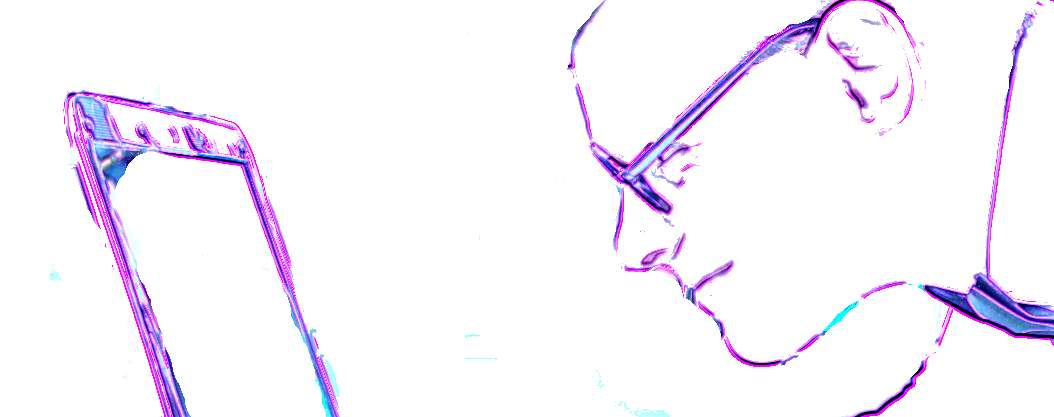 The bulk of the medical community and, to a certain extent, conventional wisdom has preached for decades that eye exercises are ineffectual with nearsightedness (myopia) because the problem is rooted in the fact that the eyeball is the wrong shape and eye exercises can't fix that. Although I am very hesitant to claim otherwise due to the lack of rigorous medical studies supporting it, I have put forth numerous times that the arguments against the effectiveness of eye exercises in combating nearsightedness seem to ignore some of the data out there. From The 15 Minute Fix: VISION: There is strong evidence that nearsightedness is largely caused by our environment. Statistics indicate that 100 years ago, around 5% of the U.S. population suffered from myopia (nearsightedness), while today nearly a third of the U.S. population is nearsighted. It stands to reason that the ability to read well into the night, the shift from outdoor jobs to factory jobs to desk jobs, and the introduction of computers are likely reasons for the degeneration of modern eyeballs. Therefore, it stands to reason, that if our environment is causing the damage, then we can take steps to stop or even repair the damage. This is why I found this article "Is Nearsightedness An Epidemic?" in U.S. News and World Report so interesting. Research by Christine Wildsoet, professor of vision science and optometry at the University of California–Berkeley, found that: In the early 1970s, about 25 percent of 12- to 54-year-old Americans were myopic. By the 2000s, more than 41 percent had the condition..... Other countries, particularly those in East Asia where schooling starts earlier and lasts longer each day, have beat us to the chase..... In Taiwan, the myopia prevalence among 7-year-olds increased from 5.8 percent in 1983 to 21 percent in 2000. And in South Korea, a large, representative study of 19-year-olds showed that more than 96 percent were myopic in 2010. So does the research indicate that anything can be done about it? Australia is one country that’s traditionally lagged behind in myopia progression trends. That’s likely due in part to the down-under lifestyle and landscape that promotes time outdoors, says Wildsoet..... Research has linked more time outdoors with decreased risk of myopia progression, even when controlling for the amount of time indoors and reading. This sounds an awful lot like engaging in eye exercises. The article also suggests doing 20-20-20, the second exercise in The 15 Minute Fix: VISION. A couple of the other suggestions seem to have come straight from the book as well: eat a nutritious diet with lots of eye healthy foods and taking steps to avoid Computer Vision Syndrome. This article and the research behind it lead me to further question the claim that eye exercises can do nothing to prevent nor improve myopia. The evidence clearly supports the view that many cases of myopia are brought on by lifestyle and environment. Given that, there are steps that can be taken to avoid the damage caused by these factors and possibly even reverse damage done. Some might say that taking breaks and getting outside don't qualify as eye exercises. I disagree - getting outside has always been a form of exercise. However, we often engage in more structured exercise (going to the gym, running, cross-fit, etc.) because adding structure to our exercise allows us to improve ourselves in less time and in a more focused manner. It's no different with eye exercises. If you can consistently get outside and continue to use your eyes in a dynamic, varied way every day (this includes actively using near vision, distance vision, peripheral vision, depth perception and tracking), then you probably don't need eye exercises. But for those of you who have lives that make this difficult, eye exercises are a great substitute - just as the gym can be for physical fitness. I am optimistic that research like this will get the ball rolling on more serious long term research on how dynamic eye usage (sometimes known as eye exercises) can delay, prevent, or even lessen nearsightedness. Age well my friends....  I have spent a lot of time writing about the importance of maintaining and tracking your sense of smell, and as important as that is, I don't want to forget about sense of taste. Conventional wisdom has it that sense of smell is an integral part of our ability to taste. However, This research by Donald Katz and Joost Maier, neuroscientists at Brandeis University, and University of Utah professor Matt Wachowiak shows that the taste-smell processing system is a two-way street. “We discovered in this experiment that the sensory systems don’t work in isolation from each other," said Katz. “One part of the cortex takes direct input from the nose, and one part from the tongue, and while it’s convenient to think that the nose and taste receptors operate independently, they don’t.” This is another great example of how the sensory perception system is integrally linked at a very deep level. The study showed olfactory nerves receive and process information even when the subjects (rats!) aren't not sniffing or even inhaling the associated scent. Of course my takeaway on this is that the study further supports the idea of working to maintain all of your senses as an integral sensory system. Don't just work on maintaining or improving your hearing or sense of smell (for example) - cross train across all of your senses. Each sense will benefit from the strengthening of the neural processing associated with another sense. In a similar vein, Dr. Katz summarized the importance of regarding the sensory system as a single system: “It doesn't make sense to probe one system separately from the other. Just like in a chorus, you can't appreciate the fullness of the music if you hear only the bass or the tenor in isolation.” Age well my friends.... I recently reread this great article published in the Wall Street Journal last year. It is a great summary of what it's like to lose one's sense of smell, some tips on how to deal with loss of sense of smell, some tips on how to repair sense of smell, and the general importance of smell. It also has this great infographic: Here's my list of how to take care of your sense of smell:
Exercise your sense of smell. Training your brain and olfactory nerves to differentiate between scents and to identify often ignored scents will improve your sense of smell. Make environmental changes. Examples include:
Age well my friends! I enjoyed reading this article - it has some good examples of people who were able to naturally improve their vision. Besides referencing the UCR study I wrote about a few weeks ago, it also gives a nice history of eye exercises.
I especially appreciated the author’s point about relaxing into better vision. One of the reasons that Nancy Neff, whose case the article focuses on, had so much success, was that she was able to relax - her eyes “simply held an enormous amount of tension.” I also love her advice on how to approach eye exercises: “Don't make it a chore and a struggle. Make it an adventure." As I discuss in VISION, eye exercises are not intended to be like weightlifting for your eyes, they should be relaxing, soothing, and healing. And remember, the benefits extend well beyond vision improvement. Use them to lower your stress, improve your cognitive function, and boost your energy levels. Age well my friends... and relax.... This fascinating study suggests that the human olfactory system is ca_pable of differentiating between more than a trillion different scents. It’s not that you necessarily need to be able to identify that many different scents, but simply that you are capable of it. "Our sense of smell is amazing," said Leslie Vosshall, who studies olfaction at the Rockefeller University in New York City. "The whole point of this study is that humans are much better at smelling than we thought." In addition to the research itself, the study includes the makings of a great sense of smell exercise. The researchers gathered a huge variety of scents and then started mixing them together to make unfamiliar combinations. Study participants were then given three vials at a time - two with the same mixture and the third with a different one. they were then asked to identify the different one. Each participant made 264 comparisons. You can recreate a version of this at home:
Let me give you an example: 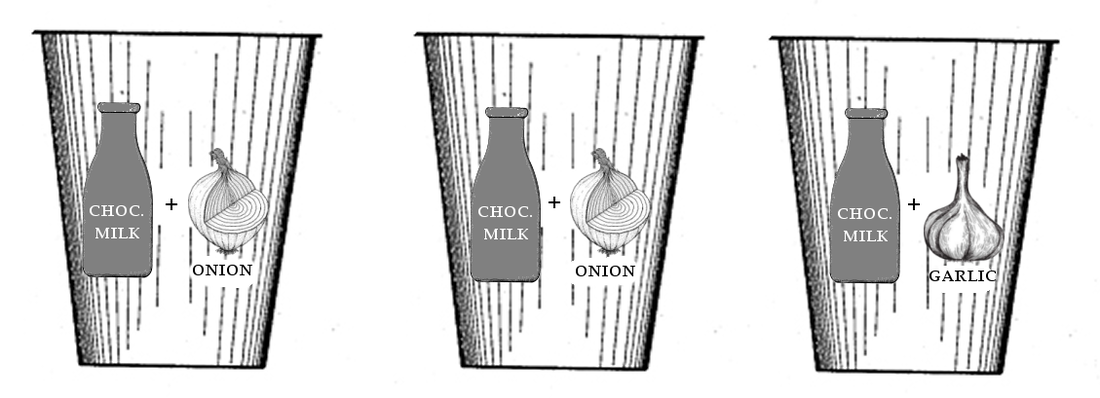 Gross, huh? How about: 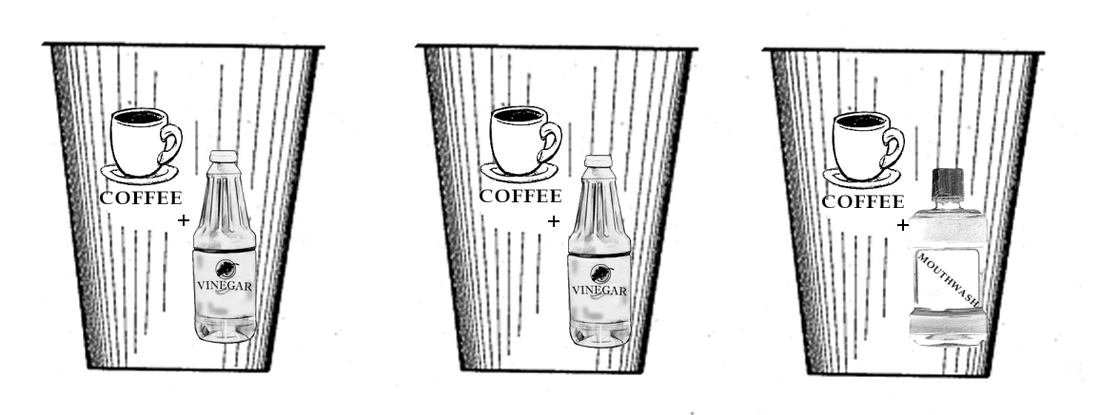 So much potential for crazy combos! Do this 2-4 times a week for a few months, tracking your combinations and your performance, and you'll be amazed by the improvement in your sense of smell. Hopefully, you can do this as part of a more comprehensive sensory exercise program. Have fun and age well! I love the slightly out of the box thinking that incorporates peripheral vision exercises into the balance program for seniors described in this article. Both eye exercises and sensory exercises can help develop and maintain balance.
Working on peripheral vision exercises, as discussed in the article, is an excellent way to give your sense of balance a little boost. As you probably know, it is difficult to maintain balance with your eyes closed (just try standing on one foot with your eyes closed). While diminished peripheral vision will not have the same impact on your balance as closing your eyes, it can still lessen your sense of balance. Keep your peripheral vision active. Balance is also closely related to hearing. A recent Johns Hopkins study found that even mild hearing loss increases the likelihood of falling threefold. Whether or not you try to improve your hearing through auditory exercises, be sure to test your hearing periodically. You should know if you have an increased risk of falling. Even if you scoff at the idea because you think you are too young for it to be a problem, now is the time to prepare your body, senses, and brain for the future - when it will become an issue. Catching hearing loss early will also allow you to take steps to stop or counter it early in the process so that you can avoid many of the associated complications. In addition to balance, hearing loss can lead to or be a sign of depression, loss of social confidence, dementia, other medical problems, and safety issues. Touch exercises can also be helpful in maintaining good balance, especially when those exercises include a visual component (i.e. see what you feel). Training the brain to use all of the sensory clues at its disposal to help determine the body’s position and orientation in space will help keep you healthy and safe well into old age - and it’s never too early to start preparing. The 15 Minute Fix: VISION includes exercises specifically designed to develop peripheral vision. The 15 Minute Fix: SENSES includes exercises for hearing and touch along with tests for tracking both, so that you can be aware of any sensory problems well before they become medical or safety issues. Age well my friends…. 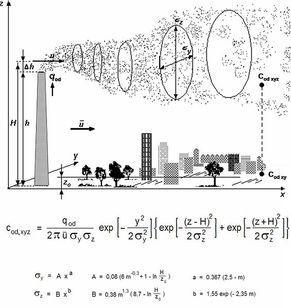 Scientists are trying to develop smell cancelling technology. While the technology itself is cool, this sounds like a terrible idea. This is not the equivalent of sunglasses, ear protection, or gloves, but for your nose. For that, you would be better off using a protective face mask. Preventing smells from being processed by your brain would only leave you with an incomplete picture of what is going on around you. You would be less aware of danger, you'd have less data with which to form memories, and you could end up with the wrong emotional feeling towards a situation. Additionally, you could end up doing harm to your sense of smell by not allowing it to process smells that are expected to go along with certain tastes and imagery. I suppose that this technology could be useful in certain extreme situations that are short term in nature and where dangers are well understood by trained professionals. I hope we never see this technology being used just to cover up stinky feet or to keep the fridge smelling fresh. Age well my friends....  I have written recently about the link between sense of smell and neurological diseases including Parkinson's, Alzheimer's, and various forms of dementia. While we are still in the early days of our understanding of the link between our senses and brain disorders, I believe the senses have tremendous potential for helping us discover how to diagnose, treat, and eventually cure these conditions. November is National Alzheimer's Awareness Month, so I'm giving half of my profits from The 15 Minute Fix: SENSES (any edition) for the month of November to the Alzheimer's Association. If you buy SENSES, thank you for your support of The 15 Minute Fix and the Alzheimer's Association. If you decide not to purchase SENSES, I encourage you to go to alz.org and make a donation directly. It's a worthwhile cause and one with the potential to make significant progress in the next decade. Age well my friends.... 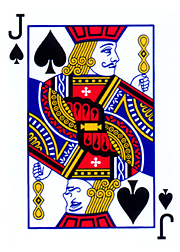 If you have read VISION, you know that I have poor depth perception. I have two perfectly fine eyes that don’t work well together. I do depth perception exercises and binocular vision training and the results have been good. The world does not look flat to me, I have learned to see 3D movies, I can track a baseball better than I could as a kid, and more. I have trained my eyes and brain to see with binocular vision much of the time. This is still a work in progress though, and when I am tired it is easy to slip back into old habits and just use one eye. However, I have noticed that even when I do this I still have the ability to perceive quite a bit of depth. I don’t have problems driving, doing household chores, or other things that would seem to require depth perception. So what’s going on? I found this podcast which gives some interesting insight into how we can have depth perception using only one eye. Apparently, the middle temporal area of our brain helps process information from even one eye, in a way that allows for some depth perception. The information is comprised of visual clues and multiple images. Wait - how can there be multiple images with only one eye? Because the one eye is moving, it can establish a sense of depth using perspective, speed, and even processing multiple images as the eye moves. This is fascinating research that shows another cool way in which the brain can adapt and compensate. So even if you are struggling to get your binocular vision functioning, doing depth perception exercises will still help train your brain to better interpret visual cues to create a sense of depth. There are people who are able to do this at an extraordinary level, the most well known recent case being Isaiah Austin, who, before he was diagnosed with Marfan Syndrome, would have likely been a top NBA draft pick, despite having only one eye. Age well my friends…. You've heard me talk about how important your sense of smell is for quality of life and as an early warning system for failing health. This may be the tip of the iceberg. This story about how Darek Fidyka, who was paralysed from the chest down as the result of a 2010 knife attack, gives a little insight into how amazing the olfactory system is. Fidyka’s spinal cord was severed, and he had little hope of ever walking again. In an experimental procedure though, doctors transplanted cells from his olfactory bulb (the main smell organ) into his spine, and two years later he has regained some lower body muscle and organ control. That is so cool! If you want to learn more, watch this BBC show on Fidyka and the groundbreaking surgery that took regenerative cells from his olfactory bulb and put them in his spine.
The scientists who discovered this process became interested in the olfactory bulb because olfactory nerves are the only part of the human nervous system known to regrow after being damaged. Having had some experimental success, scientists will begin the long process of researching how best to get access to and utilize these cells (Fidyka had somewhat risky invasive brain surgery and had an entire olfactory bulb removed - not ideal). During this long research process, they will certainly also discover more about the potential of these cells. Do these cells hold the secret to superior cell generation? Is there a fountain of youth in our noses? Does day to day use of our sense of smell have any impact on the number or quality of these cells? All questions that I am not qualified to answer. All I know is that there is some pretty sophisticated equipment in there, so I encourage you to take good care of it. Age well my friends.... My readers know that all 15 Minute Fix programs recommend making healthy lifestyle choices in addition to doing specific exercise programs. Along with eating well and not smoking, getting enough sleep is absolutely necessary if you want to feel and look younger than you actually are. Want to improve your vision? Get your sleep! Want a more youthful looking face? Get your sleep! Want to improve your sensory perception? Get your sleep! Want to slow hair loss? You know… get your sleep! And these are just the things that are covered in 15 Minute Fix programs. This infographic courtesy of The Huffington Post highlights tons of other things that can happen when you don’t get enough sleep. I admit that I struggle with getting enough sleep. I have always been a night owl, so I really have to make myself get in bed. Even when I am determined, life seems to throw up all sorts of obstacles that seemed designed solely to deprive me of sleep. Kids homework, bills to be paid, things that need to be cleaned up, that prime time football game that I just have to watch - these are not extraordinary things, just life moving along. If you get enough sleep, but you are still tired or worried about the quality of your sleep, you might try one of these products to help you figure out what’s going on. If you do have sleep issues, try to figure them out - the long-term return on this investment is huge.
Age well my friends....  If you are reading this, you probably spend enough time looking at screens (computer, tablet, and/or smartphone) that you need to be aware of the symptoms, risks, and treatments for Computer Vision Syndrome (CVS). The most common symptoms associated with CVS are:
These problems can all be compounded by vision problems such as farsightedness, astigmatism, poor convergence insufficiency, and aging conditions, such as presbyopia. While many of the problems resulting from CVS are temporary, their impact on your well being can be significant. CVS frequently causes fatigue which can lead to minor issues such as loss of productivity at work to more major issues like falling asleep at the wheel. Those who experience CVS symptoms over longer periods of time, may find that their existing eye conditions worsen more than they otherwise would have, that CVS symptoms are no longer temporary, and that they begin to the effects of stress - both mental (anxiety, depression, etc.) and physical (neck and back problems). So, other than abandoning your computer and phone, how do you combat CVS?
The American Optometric Association has a good summary of CVS along with other tips for taking care of eyes. Age well my friends…. |
YOUR HOSTJohn wants to get the most out of life and wants to help you do that too! Categories
All
Archives
January 2015
Follow John on Quora
|
